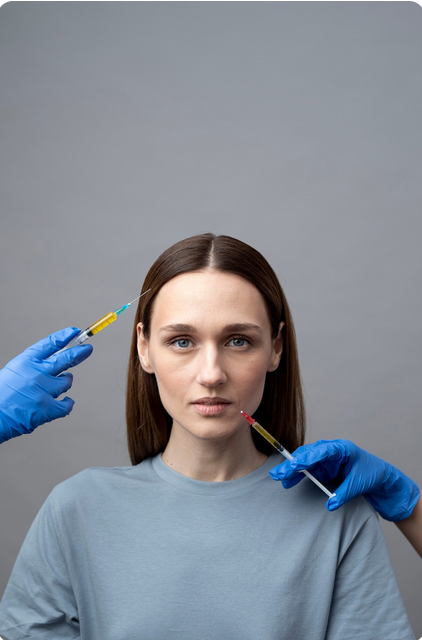Hyperhidrosis is a medical condition characterized by excessive sweating that goes beyond what is needed to regulate body temperature. For many sufferers, it significantly impacts daily life, confidence, and comfort. Botox (botulinum toxin type A) has emerged as a highly effective, minimally invasive treatment option for several types of hyperhidrosis. Here’s a closer look at the main areas it can treat:
1. Axillary Hyperhidrosis (Underarm Sweating)
Most Commonly Treated Area with Botox
- Description: This involves excessive sweating of the underarms, often soaking through clothing even in cool temperatures.
- Botox Effectiveness: Botox is FDA-approved for treating primary axillary hyperhidrosis. It works by blocking the nerve signals that stimulate sweat glands.
- Results: Most patients experience a reduction of sweating by over 80% within a week, with results lasting 4 to 12 months.
- Candidates: Ideal for individuals who have not responded to topical antiperspirants or oral medications.
2. Palmar Hyperhidrosis (Sweaty Palms)
Challenging but Treatable with Botox
- Description: Excessive sweating of the palms can interfere with daily activities like shaking hands, writing, or using electronic devices.
- Botox Effectiveness: Botox significantly reduces palm sweating, but treatment here can be more sensitive and uncomfortable due to the density of nerve endings.
- Results: Most patients report 70–90% reduction in sweating, with effects lasting around 6 months.
- Note: Numbing cream or nerve blocks may be used to manage discomfort during injection.
3. Plantar Hyperhidrosis (Sweaty Feet)
Less Common, More Complex to Treat
- Description: Sweating of the soles of the feet can lead to discomfort, odor, and skin infections.
- Botox Effectiveness: Effective but can be painful during administration. Often considered after trying other treatments like iontophoresis or prescription medications.
- Results: Similar success rates to palmar treatment, but longevity and patient comfort vary.
4. Craniofacial Hyperhidrosis (Face and Scalp Sweating)
Visible and Socially Disruptive
- Description: This includes excessive sweating of the forehead, cheeks, scalp, or upper lip. It’s highly visible and often emotionally distressing.
- Botox Effectiveness: Botox can help, especially for forehead and hairline areas. However, facial injections must be performed with care to avoid affecting muscle movement.
- Results: Noticeable improvement within a few days, lasting 4–6 months.
5. Inguinal and Groin Hyperhidrosis
Less Common, but Treatable
- Description: Sweating in the groin, inner thighs, and buttocks area can lead to irritation and infections.
- Botox Effectiveness: Botox can be used off-label in these areas, though fewer studies exist. Results and comfort levels vary.
- Note: Requires a provider experienced with intimate-area injections.
Bonus: Compensatory Hyperhidrosis
- Description: Some individuals experience new sweating in untreated areas following surgery (like sympathectomy).
- Botox Role: While not a first-line treatment, Botox may be used in targeted areas to manage new excessive sweating.
Final Thoughts
Botox is a versatile, effective solution for managing different types of hyperhidrosis when other treatments fall short. While axillary hyperhidrosis remains the most commonly FDA-approved and treated type, off-label uses for the palms, soles, face, and other areas are increasingly popular and supported by clinical experience.
Always consult with a board-certified dermatologist or provider experienced in Botox for hyperhidrosis to determine the best approach for your needs and comfort.




